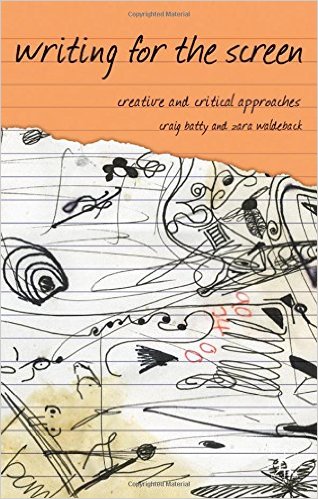guidance manual for authors in cinema and television
Writing for the Screen is a guidance manual that combines practical and theoretical advice for would-be writers aiming for success in the cinema or television – though such aspirants would do well to add Youtube and laptop productions to their list of potential delivery platforms.
Although both writing for the screen and writing for print publications largely involve sitting in front of a keyboard generating text, there are huge differences between the two activities. A print writer (journalist or novelist) works alone, has virtually no costs other than time, and generally expects to be the sole proprietor of the finished product. A screenwriter on the other hand is forced to work as part of a team, is likely to incur lavish costs, and will more than likely be replaced as ‘author’ by the director when the credits roll on opening night.
That is probably the single most important lesson that runs through all the chapters of this very successful book. The aspiring screenwriter must be prepared to recognise that soap operas, docudramas, comedy shows, feature films, and even TV shorts are productions, in which the writer is only one member of the creative whole.
The successful screenwriter is somebody who realises that a screenplay is only the rough blueprint for a work that other people will eventually create. The producer, the director, and maybe even the script editor all have higher status and can change the writer’s work to suit the ultimate purpose of the project.
The writer should also bear in mind that having chosen a large or small screen as the medium by which a story is to be transmitted – the visual element takes precedence over all else. It does not matter how subtle or witty the dialogue or commentary is, it will be the pictures which have greatest impact on the viewer. (That’s why directors get higher rating.)
This guide goes through the whole creative process step by step. It begins with writing a pitch, an outline, and a treatment. These are condensed accounts of what you have in mind, but each one has a different purpose. They include a selling document, a summary of the plot, and a step outline giving the bare bones of each scene.
All of these documents (including the script itself) need to be presented according to the conventions of the medium in professional format. Fortunately for beginners, software is now available at Celtx (free), and Final Draft (paid) which will arrange the formatting. You simply add the words.
There’s a very enthusiastic defence of genre which the authors argue is a strengthening factor to any screen production – because it offers structure, plot, tone, character, and even objects that are recognisable to viewers. Whilst this might seem to produce cinematic clichés, there is also an exploration of alternative forms of narrative – such as reverse chronology (Memento and Groundhog Day) multiple protagonists, and parallel narratives (Stephen Daldry’s magnificent film The Hours).
The underlying argument of the guide is that the finished product must offer visual pleasure – which is not to be confused with special effects and CGI manipulations – although there is a spirited analysis of the Jason Bourne trilogy. The authors argue that its car chases and explosions are more than cheap sensationalism a la James Bond, because they are closely tied to the psychological complexity and terror
endured by the protagonist as he is being threatened by the CIA.
The main emphasis of the advice offered in this manual is on the over-riding importance of structure:
The main writing currency in fiction is prose style, whereas the main currency in screenplays is structure. This means teaching is approached differently: for fiction, free-standing writing exercises are offered, focusing on language, metaphor, voice and description; screenwriting deals with acts, step outlines, cards and character arcs
There are practical exercises for generating these skills, and solid advice from the world of professional cinema and television explaining the separate roles in production teams, the opportunities open for beginners, and the differences between commercial practices in American and British film making .
© Roy Johnson 2016
Craig Batty and Zara Waldeback, Writing for the Screen, Basingstoke: Palgrave Macmillan, 2008, pp.201, ISBN: 0230550754
More on writing skills
More on creative writing
More on digital media
